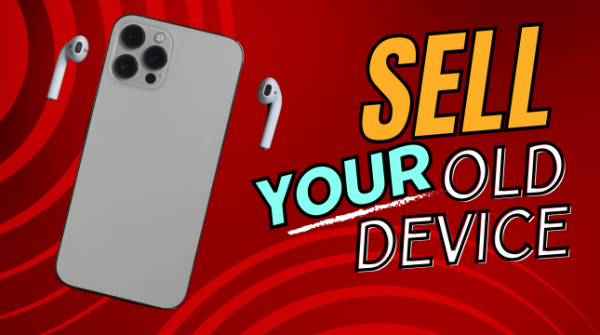
When it comes to buying a used car, the process can often feel overwhelming. With so many options available and the risk of purchasing a vehicle that might not last long, it’s easy to get lost in the details. However, spotting a great Used Car for Sale doesn’t have to be complicated. At Trade London Motor Sports, we believe that buying a reliable used car is all about knowing what to look for. In this guide, we’ll walk you through some simple yet crucial steps that will help you identify a great used car in no time.
1. Set a Realistic Budget
Before you even begin looking for a used car, it’s essential to know how much you’re willing to spend. Setting a clear budget helps narrow down your options and saves you from looking at cars that are out of your price range. Keep in mind that your budget should include not just the price of the car, but also additional costs like taxes, insurance, registration, and any potential repairs.
At Trade London Motor Sports, we recommend starting by deciding on a range you’re comfortable with, but always be prepared for some flexibility in case you come across a car that ticks all the boxes.
2. Research the Make and Model
Doing your homework on the make, model, and year of the car you’re interested in can help you spot a great deal. Certain brands and models are known for being more reliable than others. For instance, vehicles like Honda, Toyota, and Ford have long reputations for durability. Research the car’s history, including common problems, maintenance costs, and resale value.
You can find this information through online forums, car review websites, and even social media. The more you know, the better prepared you’ll be to spot a great used car when you see one. Trade London Motor Sports regularly updates its inventory with top-rated, reliable models, so feel free to check out our listings for ideas!
3. Check the Vehicle’s History Report
One of the most important steps in buying a used car is to check its history report. This report will tell you whether the car has been in any accidents, how many previous owners it has had, whether it has a clean title, and if it has any outstanding recalls. A vehicle history report can be easily obtained online through services like Carfax or AutoCheck.
Don’t skip this step! A clean history report will give you peace of mind, knowing that the car you’re considering has a relatively trouble-free past. If the seller can’t provide a report, it’s a major red flag.
4. Inspect the Exterior and Interior
Once you’ve narrowed down your options, it’s time to inspect the car. Start with the exterior. Walk around the vehicle and check for any visible signs of damage, such as dents, rust, or scratches. While minor cosmetic damage might not affect the performance of the car, large dents or rust can be indicative of more serious underlying issues.
Check the tires for wear. Uneven tire wear could be a sign of alignment issues, which can be expensive to fix.
Next, take a close look at the interior. Ensure the seats, dashboard, and controls are in good condition. Look for signs of water damage or mildew, particularly in the carpet and upholstery. Check that all electronic features like air conditioning, the radio, and power windows are functioning properly.
5. Test the Engine and Transmission
A great used car should have an engine that runs smoothly without strange noises, leaks, or excessive smoke. When starting the engine, listen for any odd sounds, such as knocking or grinding. These could be signs of problems with the engine or other vital components.
Check the transmission by shifting through the gears. It should be smooth and responsive. Any delay or hard shifting could indicate an issue with the transmission.
6. Take It for a Test Drive
A test drive is essential to getting a feel for the car and how it drives. Pay attention to how it handles the road, how it accelerates, and how the brakes respond. Test the steering to ensure it’s responsive and there are no vibrations. Also, listen closely for any unusual sounds that might indicate mechanical problems.
During the test drive, don’t hesitate to take the car on different types of roads, including highways, to check its performance at varying speeds.
7. Get a Mechanic’s Opinion
Even if the car seems to be in great condition, it’s always wise to have it inspected by a trusted mechanic before making a purchase. A mechanic can spot hidden issues that might not be obvious during a casual inspection. This is particularly important if the car has high mileage.
Many buyers find that a mechanic’s inspection is worth the investment, as it can save them from buying a car that will soon need costly repairs. A mechanic can also help you assess whether the price is fair based on the car’s condition.
8. Negotiate the Price
Once you’ve found a great used car and have all the information, it’s time to negotiate the price. Based on your research, history report, and mechanic’s assessment, you may be able to negotiate a lower price, especially if you’ve found issues that need fixing. Be prepared to walk away if the seller isn’t willing to meet your price or if you feel uncomfortable with the deal.
9. Review the Paperwork
Before finalizing the purchase, ensure all paperwork is in order. This includes the title, bill of sale, and any maintenance records the seller can provide. Make sure the VIN (Vehicle Identification Number) on the paperwork matches the one on the car.
At Trade London Motor Sports, we ensure all our cars come with clear, organized documentation to help make the buying process smooth and hassle-free.
Conclusion
Spotting a great used car isn’t about luck—it’s about knowing what to look for. By setting a realistic budget, doing thorough research, inspecting the vehicle, and getting expert opinions, you’ll be well on your way to finding a reliable, affordable car. At Trade London Motor Sports, we’re committed to helping you find a used car that fits your needs and budget, so feel free to reach out to us for more tips or to explore our available inventory. Happy car hunting!








